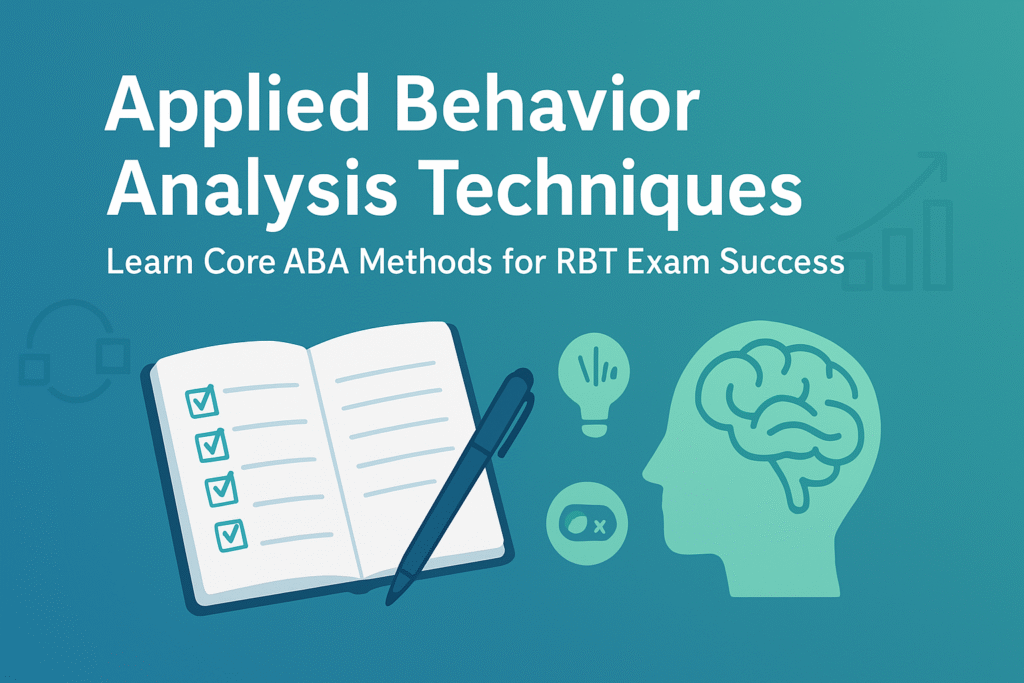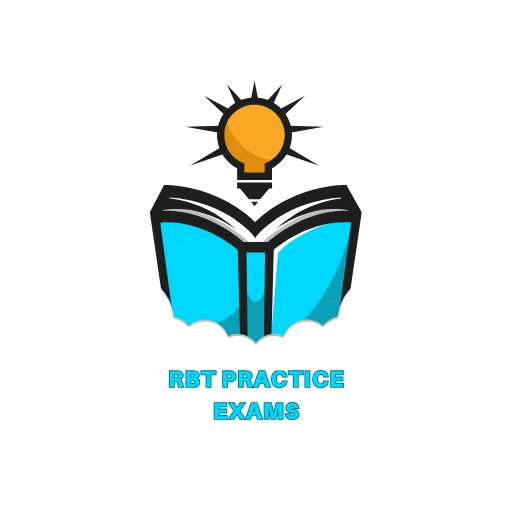Applied behavior analysis techniques are practical tools designed to improve learning and behavior in meaningful ways. Whether you’re a parent, a teacher, or preparing for the RBT exam, understanding these methods can make a big difference. ABA is widely used to support individuals with autism and developmental delays, but its techniques apply to many learning and behavior situations. In this guide, we’ll break down the most effective applied behavior analysis techniques, why they work, and how you can apply them in real life.
Table of Contents

What Are Applied Behavior Analysis Techniques?
Applied behavior analysis techniques are structured methods used to teach skills, encourage positive behavior, and reduce challenging actions. They rely on the science of behavior, focusing on reinforcement, repetition, and careful observation to help individuals learn effectively. According to BACB and ABA research , these techniques are central to therapy programs, RBT exam prep, and practical teaching strategies.
Core ABA Techniques Explained Positive Reinforcement
Positive reinforcement is the foundation of ABA. It means rewarding a desired behavior so it’s more likely to happen again. For example, praising a child for raising their hand in class reinforces classroom participation.
Discrete Trial Training (DTT)
DTT breaks learning into small, structured steps. Each trial includes a clear instruction, a student response, and feedback. It’s often used to teach early skills like identifying objects, colors, or numbers.
Natural Environment Teaching (NET)
NET focuses on teaching skills in everyday settings. For instance, if a child wants a snack, the therapist uses that moment to encourage communication. This makes learning more natural and meaningful.
Shaping and Chaining
Shaping: Reinforcing small steps toward a bigger goal. For example, rewarding a child for trying new words before expecting full sentences.
Chaining: Teaching complex skills step by step. Handwashing can be taught in a chain: turning on water, applying soap, rinsing, and drying.
Prompting and Fading
Prompts (verbal, visual, or physical) guide a learner toward the right response. Over time, prompts are faded so the skill becomes independent.
Functional Communication Training (FCT)
FCT helps individuals replace challenging behavior with effective communication. Instead of crying or yelling, a learner is taught to use words, signs, or devices to express needs.
Why ABA Techniques Work for Behavior Change?
ABA techniques succeed because they’re evidence-based and personalized. They focus on observable behaviors, clear goals, and measurable progress. Instead of guessing, therapists track data to see what works best for each person.
ABA Techniques in Everyday Life
These methods aren’t just for therapy rooms. Parents can use reinforcement at home, teachers can apply DTT in classrooms, and caregivers can practice FCT during daily routines. Simple techniques like prompting or shaping make everyday learning smoother and more consistent.
How ABA Techniques Relate to RBT Exam Preparation
If you’re studying for the RBT exam, knowing applied behavior analysis techniques is essential. Many exam questions test your ability to apply methods like reinforcement, prompting, and functional communication in real scenarios.
Key Concepts on the Exam: reinforcement schedules, prompting types, data collection.
Practical Application: scenario-based questions often ask you to choose the best ABA technique for a given situation.
Study Support: Regular practice builds confidence and accuracy.
To prepare effectively, try a rbt practice exam, complete a rbt practice test , or challenge yourself with a rbt mock test . These tools help you recognize how techniques are applied in testing situations.
FAQs About Applied Behavior Analysis Techniques
What is the most common ABA technique?
Positive reinforcement is the most widely used ABA technique because it strengthens desired behaviors in any setting.
Are ABA techniques only for autism?
No. While ABA is strongly associated with autism support, its techniques apply to learning, workplace training, classroom management, and even personal habit building.
How do ABA strategies support communication skills?
Methods like FCT and shaping help learners express needs clearly, improving both speech and nonverbal communication.
What ABA techniques are on the RBT exam?
Expect to see reinforcement, prompting, chaining, shaping, and data collection methods covered in multiple exam questions.
Conclusion
Applied behavior analysis techniques provide practical, evidence-based tools to improve learning and behavior. Whether you’re applying them at home, in classrooms, or as part of your RBT exam study, they make a real difference in supporting growth and independence.
Ready to test your knowledge? Start your rbt practice exam today, try a rbt practice test , or challenge yourself with a rbt mock test to boost your confidence and exam success.
